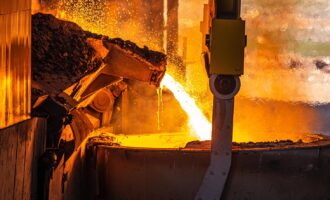Chevron well positioned to capture Asia lubricant growth
By Vicky Villena-Denton and Aaron Stone
Despite the recent strength in the U.S. economy, when it comes to global economic growth across all industries, economists still look to the Asia-Pacific region as delivering the highest potential. Rising income and a growing middle class has created aspirational demand for consumer items such as cars and other consumer goods, which in turn, has created the need to expand infrastructure.
Rochna Kaul, newly appointed general manager for Chevron’s Asia/Pakistan Lubricants business unit, echoes strong market potential for lubricants in the region — predicting China and India will exhibit the strongest growth, although “we are also seeing growth in other parts of Asia — by as much as 2% — for the lubricants sector.”
Chevron has lofty ambitions in this high demand market. F+L Magazine spoke with Kaul in Singapore recently to discuss the company’s ambitions for the region. Lubricants remain a strategic business for Chevron, with Asia playing a pivotal role given its need for energy to support economic progress. Kaul believes Chevron is well positioned to capture growth in the region having built significant capability over an extended period and the organization will continue to invest in lubricant formulation technology and the latest marketing technology to build “real-time and continuous connection with customers and distributors,” she says.
Chevron Lubricants is a leading marketer of premium base oils and one of the world’s largest producers of finished lubricants. The U.S.-based company, one of the largest oil and gas companies in the world, promotes three widely recognized brands (Chevron, Caltex, Texaco) which are sold today in 44 countries. The Caltex brand legacy extends more than 80 years in the region, which Kaul believes demonstrates the company’s long-term commitment to Asia. Chevron markets a broad range of engine oils, fuel additives and coolants under the Caltex Havoline, Delo and Techron marks.

Globally, Chevron’s supply chain network includes 16 lube blending plants concentrated in high demand markets, including wholly owned lube blending plants in China, Pakistan, Singapore, Thailand and Vietnam, alongside joint venture plants in Sri Lanka (lube blending plant) and South Korea (base oil). The organization also has sales, marketing and supply chain presence in several markets including Malaysia, the Philippines, Pakistan and Indonesia. While Kaul confirms Chevron does not have a direct presence in some Asian countries, such as Bangladesh, the company does export to these nations. Chevron has set up a supply chain structure that meets the company’s growth ambitions and to exceed their customer value proposition, she says.
In mid-2017 Chevron Lubricants signalled its intentions in the Asian region with a significant restructuring of the Asian business — including the formation of two new business units. The change aligns with their regional growth strategy and supports ongoing expansion and sales growth in the broader Asia-Pacific region. The business realignment has seen Asia divided into Greater China and Asia/Pakistan lubricant business units — effective August 1, 2017. Greater China includes the China, Taiwan and Hong Kong finished lubricant operations. Kaul leads the Asia/Pakistan Lubricants business unit responsible for guiding the Thailand, Sri Lanka, Pakistan, Philippines, Vietnam, Malaysia, Singapore and Indonesia operations.
Kaul is excited about the potential this market holds for its Caltex-branded product lines of motor oils, coolants and fuel additives. “We have experienced steady growth in our Asian markets. We will continue to drive our full portfolio of lubricant products across the region,” she says. Prior to her current appointment, Kaul was based in South Africa for three and a half years as general manager, Southern Africa for Chevron International Products. Although, an earlier stint leading Chevron Lubricants’ marketing business in Singapore ensures an easy familiarity with her new “home” market.
There is no doubt that lubricants are an attractive business. Kaul considers the energy and lubricants industries as “noble industries” in that they have created and enabled a higher standard of living in many parts of the world, including the Asia-Pacific region. Her challenge, she claims, is to outperform expectations in a region that has enjoyed strong fiscal performance in recent years. Realistically, this is not the only challenge Kaul will face. The lubricants industry is contemplating a variety of impediments to growth in the upcoming years.
 Narendra Modi’s Indian government recently announced a tremendously ambitious target date of 2030 to move completely to electric vehicles. China has also indicated plans to go electric, although China’s electric vehicle roadmap is still hazy at best. Industry players
Narendra Modi’s Indian government recently announced a tremendously ambitious target date of 2030 to move completely to electric vehicles. China has also indicated plans to go electric, although China’s electric vehicle roadmap is still hazy at best. Industry players
in China believe that China’s plan which could be in the 2040 time frame would not be pure electric, but a combination of hybrid, plug-in, etc. Clearly, however, whatever these two giant Asian nations decide later will have a dramatic impact on the energy and lubricant landscape in the region.
Kaul believes, however, that lubricants will remain a compelling part of their offer. Continued economic progress, an increase in the size of the middle class, industrial growth and greater demand for transport, will continue to fuel strong demand for lubricants. Electric is “only one part of the whole energy mix,” she says. “Regardless, we’ll be ready for change as it comes,” she says.
While competitors like Shell and BP have recently made moves to signify the start of their transformation from a pure oil and gas play to a broader energy mix, the parent of Chevron Lubricants, Chevron Corp. has not made any announcements yet.
Counterfeiting is “definitely a problem” in her new Asia market and another key battlefield. “It matters what’s in the bottle,” she exclaims, bemoaning the impact of imitation products on machinery and performance. While unwilling to share the company’s approach to eradicate counterfeiting, Kaul confirms the company is working to get smarter in their approach to combating this wide-spread issue.
Asia is primarily a do-it-for-me (DIFM) market — with cheap labour readily available. Kaul suggests no reason to believe this trend will change, citing High Street as the company’s biggest retail channel for lubricants. Purchases of lubricants at service stations are predominantly for topping up between oil changes, and with OEM advancements in engine technology reducing oil consumption, the need for a top up at service stations is increasingly infrequent. Most consumers prefer to rely on professionals for their oil change — an OEM dealer, fast lube, or another service facility, says Kaul.







